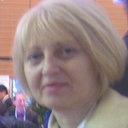Assessment of myocardial viability with (99m)Tc-sestamibi -gated SPET images in patients undergoing percutaneous transluminar coronary angioplasty.
Palavras-chave
Resumo
The present study was designed to evaluate whether nitroglycerin administration preceding the injection of technetium-99m labelled metroxy-isobutyl-isonitryl ((99m)Tc-sestamibi), improves the detection of myocardial perfusion defect reversibility. Moreover, we assessed whether myocardium kinetics improved after the percutaneous transluminar coronary angioplasty (PTCA) study. The study population consisted of 12 patients, 8 males and 4 females, 48-73 years old (mean age: 60.41 years) with chronic stable angina, resting wall dyskinesia, and >/=50% stenosis or occlusion of at least one coronary artery, who were scheduled to undergo PTCA. A gamma-camera gated single photon emission tomography myocardial perfusion scintiscan was performed as a baseline study with (99m)Tc-sestamibi (GSPET-B) and another similar scintiscan after nitrate augmentation (GSPET-N) before PTCA and two to six months after PTCA (GSPET-R), to assess the extent of perfusion defects, contraction abnormalities and myocardial viability. Cedars QGS software was used for semi quantitative assessment and sum perfusion scores were calculated for each study. According to our results from the 174 hypoperfused segments studied by GSPET-B, 137 segments had tracer activity <50%. From the 137 segments with tracer activity of <50% only 51 (37%) remained unaltered after PTCA. Twenty-six of them (51%) were described as nonviable after the GSPET-N study and the remaining 25 were defined as viable. Our study demonstrated significant perfusion improvement after nitrate augmentation (mean sum perfusion score decreased from 34+/-9 in the baseline study (SBS) to 23+/-11 in the GSPECT-N study (SNS), P=0.04. There was no significant difference between SNS and mean sum perfusion score after revascularisation (SRS), 23+/-11 and 24+/-13 respectively (P=0.833). The specificity, sensitivity and accuracy of the perfusion improvement after PTCA, were calculated as: 52%, 85% and 76% respectively. The low specificity in our study could be due to performing GSPET-R in some patients, six months after PTCA; during this time restenoses may occur. Two of our patients whose perfusion and myocardial wall motion kinetics had worsened and also had clinical symptoms of pain and fatigue, were considered to have developed restenosis. In the present study, myocardial wall motion kinetics showed non-significant improvement of global ejection fraction (EF). EF increased from 43.9%+/-3.3% to 48.9% after nitrate augmentation (P=0.262) and to 47.2%+/-6.4% after revascularization (P=0.091). Myocardial wall motion hypokinesia showed significant improvement of severity scores in the GSPET-N study, as well as after PTCA revascularization (P<0.01). It is concluded that GSPET-N (99m)Tc-sestamibi imaging significantly improves the detection of defect reversibility. On the basis of our results, it appears appropriate to recommend GSPET-N (99m)Tc-sestamibi imaging only in patients with perfusion defects and tracer activity of <50%. In such cases it is recommended to perform GSPET not only for perfusion but also for a myocardial wall motion kinetic study. The follow up study to evaluate the result of PTCA is recommended to be performed within 2 months after PTCA, before restenosis may occur and 6 months after PTCA if restenosis is suspected.


